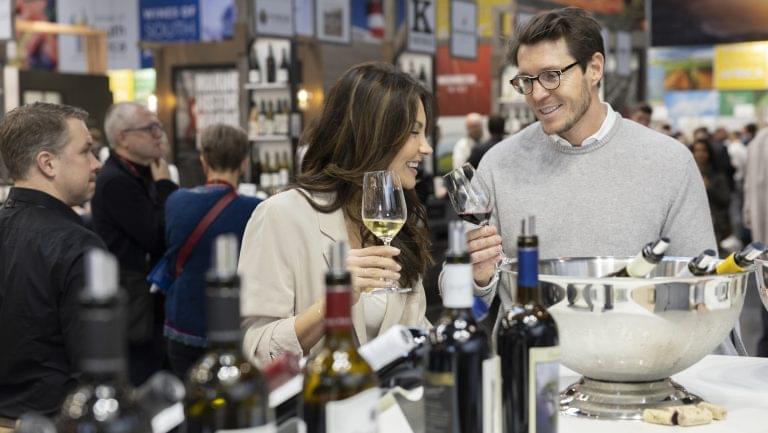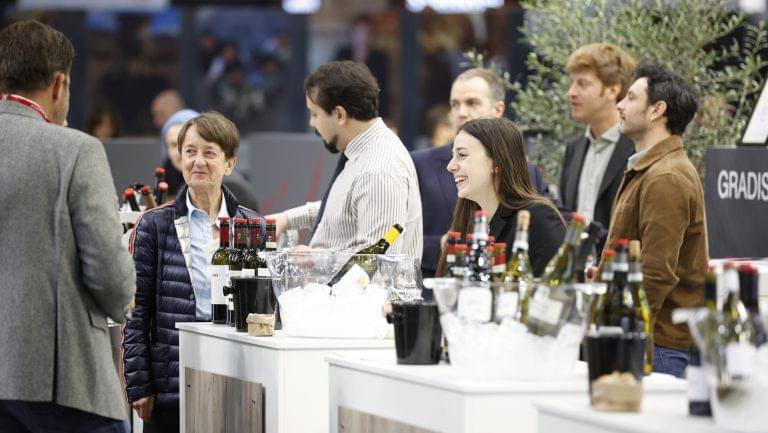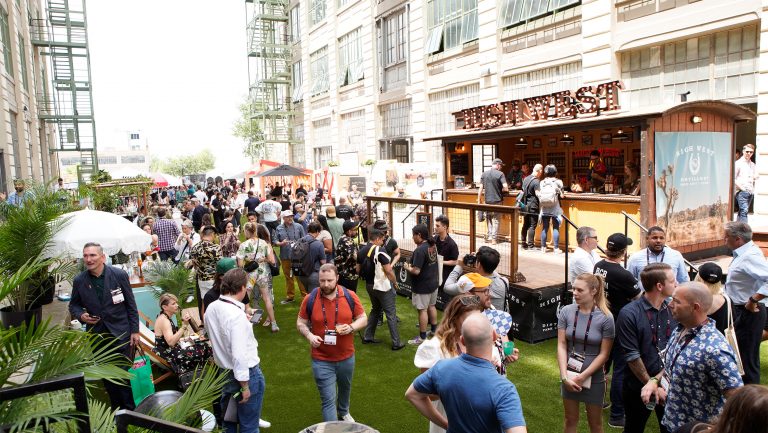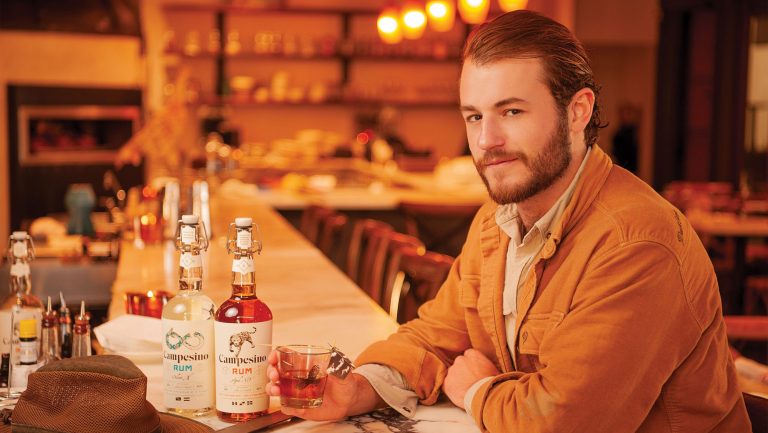This year’s ProWein event, one of the largest international wine and spirits trade fairs in the world, was a booming return after last year’s COVID-related postponement and two canceled fairs in 2020 and 2021. The show saw nearly 6,000 exhibitors from more than 60 different countries and an international trade audience of nearly 50,000—a scope that’s hard to fathom without experiencing firsthand.
After spending two days immersed in the diverse, high-energy fair, a few insights about the current state of the industry emerged: The beverage alcohol trade is changing rapidly to include far more producers from nontraditional regions. In an industry where personal relationships are highly important, the desire for in-person connection remains strong. And many of the trends seen in the U.S. market—like the focus on sustainability and alternative packaging—are just as important to international markets.
During my time at the fair, I also had the opportunity to taste hundreds of wines, a few of which stood out. Not only are the wines listed below well-made and delicious, but they also illustrate broader trends seen across the global wine trade.

Don’t miss the latest drinks industry news and insights. Sign up for our award-winning newsletters and get insider intel, resources, and trends delivered to your inbox every week.
1. Drappier ‘Clarevallis’ Extra Brut NV, Champagne, France
Sustainability is shifting from a nice-to-have to a must-have
If it seems like everyone is talking about sustainability these days, it’s because they are. Over the last few years, sustainability has become a high priority for both consumers and producers. The majority of the producers I encountered at ProWein had at least a few sustainability initiatives they could point to, and most visitors expected as much.
The Champagne region was an early adopter of the sustainability trend, being the first wine region to conduct an audit of its carbon footprint in 2002. Today, many Champagne producers remain at the forefront of this movement. Champagne Drappier, for example, became the first carbon-neutral producer in the region in 2016 and is now a leader in several sustainability initiatives, such as the use of solar panels and recycled packaging material. Their cuvée Clarevallis, an herbal, mineral-driven Champagne, is made from organically farmed grapes and includes a small portion of Blanc Vrai, the local name for Pinot Blanc.

2. Cantina Goccia Rosso 2020, Umbria, Italy
Sustainability concerns are driving a packaging revolution
Packaging changes have gotten off to a slow start, with many producers reluctant to use lighter weight bottles or cans for fear that consumers would perceive these wines as lower quality. Now, the mentality around packaging is shifting more widely. As demand for sustainably made products soars, and practical issues related to supply chain disruptions come to a head, many producers are taking this opportunity to make changes.
In Italy, Cantina Goccia is fully embracing the packaging revolution with a dramatically different bottle—one that’s made out of 94 percent recycled paper. The bottle, which was developed by the British sustainable packaging firm Frugalpac, weighs just 83 grams (compared to a standard glass bottle’s 500 grams or more) and has an 84-percent-lower carbon footprint than traditional glass bottles. Importantly, you can feel just as good about the wine that’s inside.
3. Weingut Bergdolt-Reif & Nett Reverse Riesling Entalkoholisiert, Pfalz, Germany
The no- and low-alcohol category takes center stage—but quality remains hit or miss
In the U.S., and around the globe, demand for no- and low-alcohol wines is soaring. Producers from all over the world are starting to make lower alcohol or alcohol-removed products. The problem? Many of these wines don’t taste good, and it often goes beyond just a failure to replicate the real thing; many examples have unpleasant off-flavors.
There is, however, a bright spot among the sea of mediocre-to-bad offerings, and it’s Germany’s non-alcoholic Rieslings, particularly this example from Weingut Bergdolt-Reif & Nett. While not quite a stand-in for the full-alcohol version, this wine showcases Riesling’s characteristic aromatic intensity and is pleasant on the palate, if noticeably lighter bodied.

4. Bovin Winery ‘Dissan Barrique’ 2018, Tikvesh, North Macedonia
Europe’s unsung regions are moving into the spotlight
Outside of major U.S. markets, it’s almost impossible to find wines from small, up-and-coming regions. Even in big cities, these wines are often still overlooked in favor of wines from classic wine-producing countries. But at ProWein, many of the world’s nontraditional wine regions were represented, particularly those from central and eastern Europe, such as Croatia, Slovenia, Romania, and Moldova.
It turns out, these countries are making good wines that are absolutely worth seeking out, such as this bottle from Bovin Winery in North Macedonia. The grape, Vranec, is the region’s leading indigenous variety, known for flavors of black fruit and Mediterranean herbs, as well as its capacity to age.
5. Tanaka 1789 X Chartier Blend 001 Vintage 2019, Miyagi, Japan
Sake is gaining traction
Sake has also been slow to reach a broader audience. In the U.S., the problem likely stems from a lack of visibility outside of establishments that traditionally serve sake, such as sushi restaurants. Nevertheless, the category is beginning to gain traction, both in the U.S. and abroad. In 2022, both the value and the volume of sake exports increased more than 100 percent year-over-year, according to the Japan Sake and Shochu Makers Association.
There are many high-quality examples in styles ranging from dry to sweet to sparkling, and according to sommelier and consultant Julia Scavo, who presented at ProWein, sake provides the ideal food pairing alternative for tastes that are difficult to pair with wine, such as acid, umami, and bitterness. With its lower acidity and higher alcohol, this sake from Tanaka 1789 X Chartier paired well with the creamy, umami-rich cheeses it was served with.
While many of these trends are not new, they are beginning to take on a new level of importance for both producers and consumers, which is driving real change—and pushing the industry forward.

Dispatch
Sign up for our award-winning newsletter
Don’t miss the latest drinks industry news and insights—delivered to your inbox every week.
Caitlin A. Miller is a New York-based wine writer and the current associate editor for SevenFifty Daily. Her work has appeared in Food & Wine, Vinous, and Christie’s International Real Estate Magazine. She holds the WSET Diploma in Wines and was the recipient of the 2020 Vinous Young Wine Writer Fellowship.






